This is a video preview to the shooting range model posted in February 2010. [sociallocker][/sociallocker] Read More... "A Virtual Shooting Range in Excel – video preview"
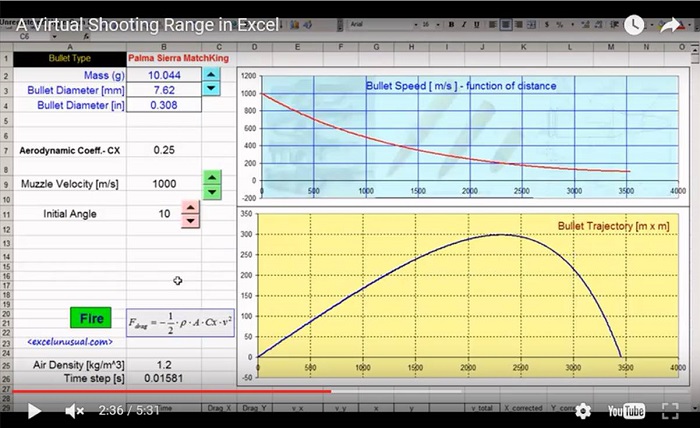

This is a video preview to the shooting range model posted in February 2010. [sociallocker][/sociallocker] Read More... "A Virtual Shooting Range in Excel – video preview"
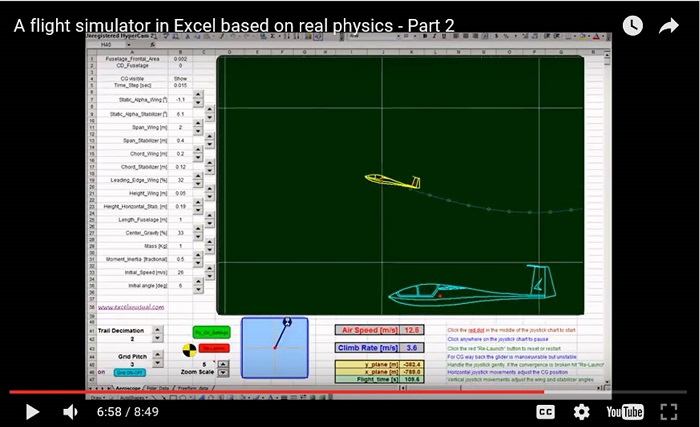
This is an improved version of the Aeroscope – the “Aeroscope_4”. It runs about 50% faster. If you start the model by clicking the green “Fly_by_settings” button you can fly hands-free and adjust parameters during the flight. You can at any time click the red dot in the center of the chart and start the joystick macro, which means that… Read More... "The Aeroscope – video preview #2 and an improved Excel file (#4)"
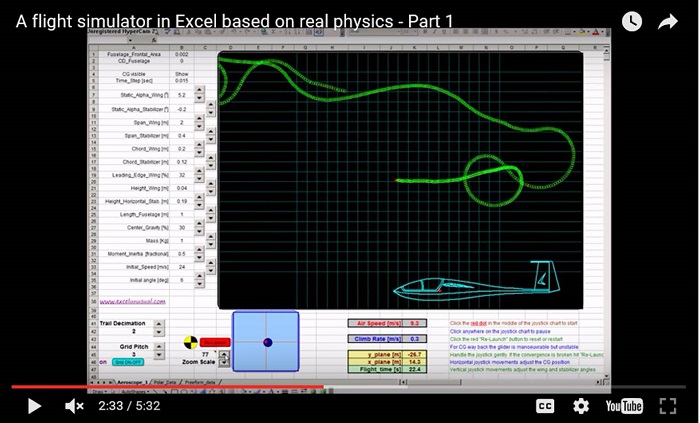
[sociallocker][/sociallocker] Read More... "The Aeroscope – video preview #1"

In the previous section, the main wing airfoil and the horizontal stabilizer airfoil were simulated using Xflr5. The three coefficients, lift, drag and moment were then interpolated on charts in Excel using 4th and 5th order polynomials. This section shows a few tricks about how to easily introduce those 60 equations as spreadsheet formulas in Excel ranges. It also presents a simple linear interpolation method across the Reynolds… Read More... "Longitudinal Aircraft Dynamics #2 – 2D polynomial interpolation of parameters cl, cd and cm"
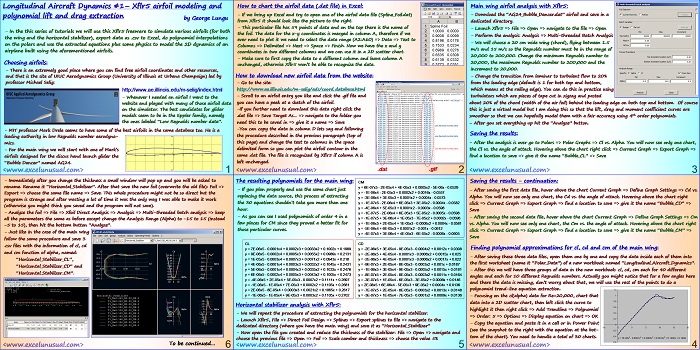
This is a tutorial about using a free aerodynamic modeling package (Xflr5) to simulate two airfoils in 2D (the main wing and the horizontal stabilizer) for ten different Reynolds numbers, then using Excel to extract the approximate polynomial equations of those curves (cl, cd and cm) and based on them, simulate a 2D aircraft as an animated model. This section deals with… Read More... "Longitudinal Aircraft Dynamics #1 – using Xflr5 to model the main wing, the horizontal stabilizer and extracting the polynomial trendlines for cl, cd and cm"

The previous section implemented and charted the ping-pong polar diagrams in a spreadsheet and showed a reasonable similarity, for moderate angles of attack, between these diagrams and the ones modeled using Xflr5, a virtual wind tunnel. This section introduce the concept Reynolds number and it also contains a very brief introduction to Xflr5, the free virtual wind tunnel software. Aerodynamics… Read More... "Aerodynamics Naive #3 – a brief introduction to Xflr5, a virtual wind tunnel"
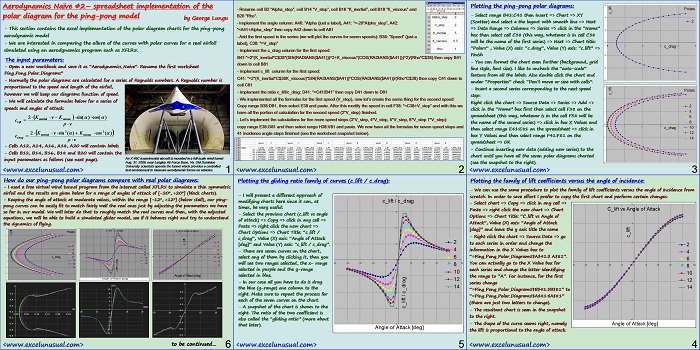
This section of the tutorial implements the lift and drag formulas in a worksheet, creating and charting the polar diagrams for an ultra simplified ping-pong model of an airfoil. Comparing these diagrams with ones obtained by using a virtual wind tunnel (XFLR5) we can see a decent resemblance for moderate angles of attack (smaller than about 8 degrees in absolute value).… Read More... "Aerodynamics Naive #2 – spreadsheet implementation of the Ping-Pong polar diagrams"
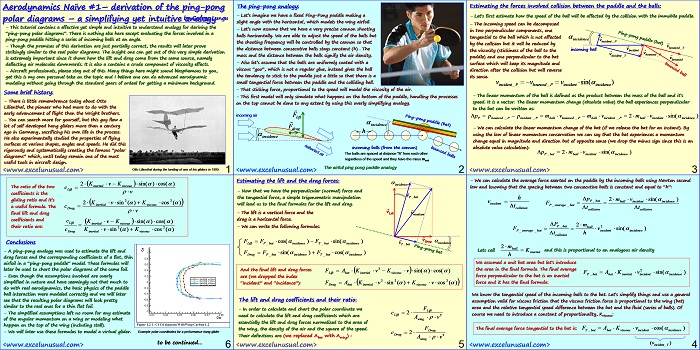
This is the ping-pong aerodynamic analogy. The wing is a ping pong bat and the air is a bunch of evenly spaced array of ping pong balls. It is a naive model but, as we will see in a later post, the polar diagrams derived from this analogy (between -12 to +12 degrees of angle of attack) are surprisingly close shape wise to the real diagrams of a thin,… Read More... "Aerodynamics Naive #1 – deriving the Ping-Pong airfoil polar diagrams"
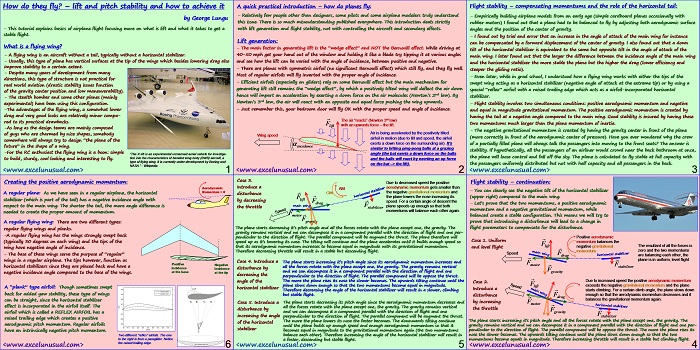
Have you ever wondered why the flight attendants of a half empty airliner talk people into moving to the front half of the plane? Have you ever wondered why a flying wing can fly without a tail or why the stability of some of these flying wing can be controlled only by computer? Or why a 12 pack stored in at… Read More... "How Do They Fly? – an intuitive look into lift generation and flight stability"
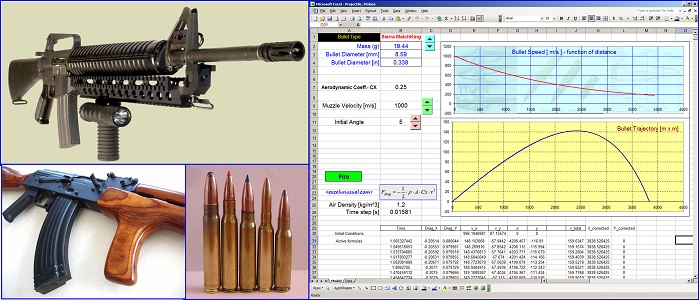
Hi Folks, As a kid was fascinated with high power rifles, sniper rifles, cannons and in general, fast projectiles. I’ve been brainwashed with all sorts of urban legends about how far an AK 47 or a pistol can shoot or how thick a steel metal plate a bullet can penetrate at various distances. I’ve also watched some documentary about snipers… Read More... "2D Projectile Motion Model #1 – a virtual tactical shooting range"
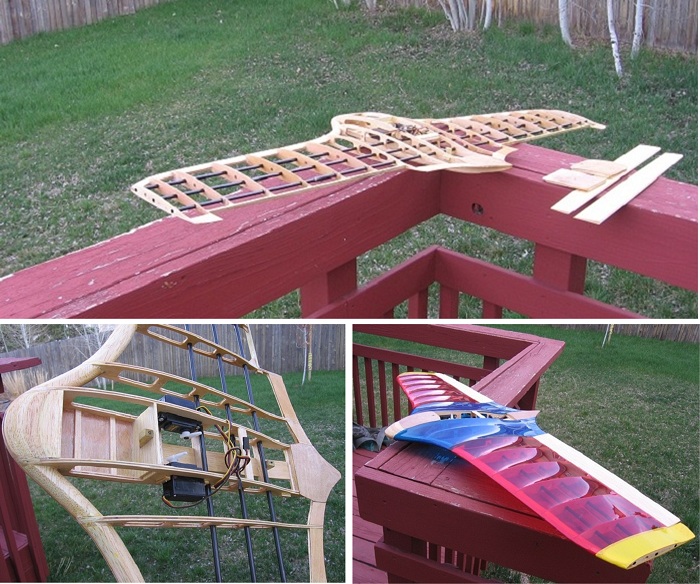
Hello everyone, I’ve been into flying wings since 2000 when I bought a Zagi online. As piloting style I can compare a flying wing to a snowboard ->> COOL. After abusing it greatly, I ended up mounting a couple of small Russian Norvel glow engines on it and eventually I had to bury it, since it became a pack of crumpled styrofoam. In 2005 I built another wing out of packaging tape… Read More... "Drafting an RC Flying Wing in Excel"